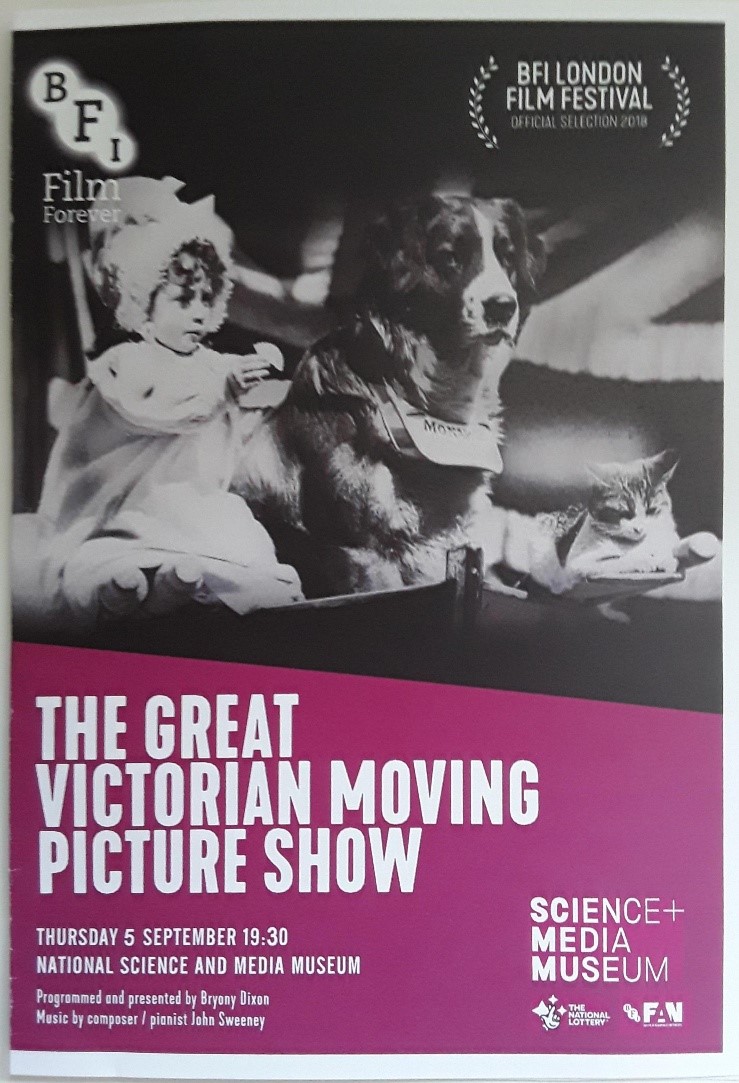Going to the cinema may be something that we do on a date, as a leisurely activity or to hang out with friends. It gives us a chance to kick back and relax, grab some popcorn and recline in the plush seats we find in cinema complexes these days.
However, the cinema was not always this way. At around a minute in length, early cinema films were very short—barely enough time to get started on the popcorn! Films were black and white, silent, and filmed in one continuous shot with one steady camera and no editing. The films were about daily life, often documenting normal activities instead of telling a narrative with well-thought-out characters like today’s films.
We’ve come a long way in film-making and production since the 19th century. (For more about the development and early days of cinematography, read our very short history of cinema.)
Therefore, a chance to see some very early films in this style seemed like an event that should not be missed—an opportunity to relive history, as well as to learn about the history of cinema and film-making.

I was excited to attend the The Great Victorian Moving Picture Show as I’d never been to a similar event; this seemed to be something unique. It certainly was—and the screening was actually the first showing of the Picture Show outside London, which was a real treat for Bradford locals and for the museum.
The show was hosted by Bryony Dixon, the curator for silent film at BFI National Archive. Her commentary throughout was insightful, pointing out details in the films and sharing the backstory of each film while outlining how the films were shot. I wasn’t sure how a commentary would work alongside film, but without Bryony the films would have been much less enjoyable.
Another key element to the show was the musical accompaniment while the films were shown, which was played live on the piano by John Sweeney. The music really matched the tone of the films and helped to tell a story. For one film, Her Majesty the Queen Arriving at South Kensington (1899), the music was very regal with notes of God Save the Queen, whereas for Iron Foundry Workers (1900), showing workers near Newcastle making iron ingots, the music was tense, fitting with the nature of the work. The musical element could have been played in through speakers but this being live really added a special touch to the event and gave a performance value to the show.
There was a real variety of films too, covering topics such as royalty, war and comedy, and the show presented a total of 51 films. This figure may astound you as the event was only 90 minutes long—the length of many feature films—but the individual films were very short. Some were a mere four seconds, others as long as one minute, but all gave a true insight into Victorian life and the period of time when the films were made, between 1896 and 1901.
Not only was the show enjoyable to watch as an audience member, but the show was deeply informative too, with Bryony outlining the process of actually restoring Victorian film, the challenges faced in doing this, and how the films will be preserved for many years to come. Viewing some of the original reels puts into perspective the hard work that has gone into restoring them for public viewing. The result of this effort was easy to see in the brilliant clarity of the films, an effect made all the more powerful when viewing them on the big screen.
One of my favourite films from the show was Tram Journey through Southampton (1900) which, with its point-of-view shot from a tram, showed Victorian life as it truly was; the closest I have felt to the past. The Grand Canal Venice (1898) was also wonderful: the motion of moving through the canal and the beautiful piano music really transported me, and I was thankful for the experience of this rare insight into what life was like.

It’s important to always look back at history and the first inventions to determine how we can be innovative moving forwards with new technologies. In the National Science and Media Museum presenting the Great Victorian Moving Picture Show, the museum goes some way to preserving the life of these films, sharing them with new audiences and reconnecting modern audiences with the past.
The museum is holding its annual Widescreen Weekend film festival on 10–13 October 2019. The programme features many classic films, insightful talks and tours, and lots of opportunities to discuss all things cinema. The fantastic Great Victorian Moving Picture Show event paves the way for a very interesting weekend of celebrating film. Read more about Widescreen Weekend and see the full programme.